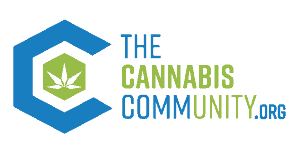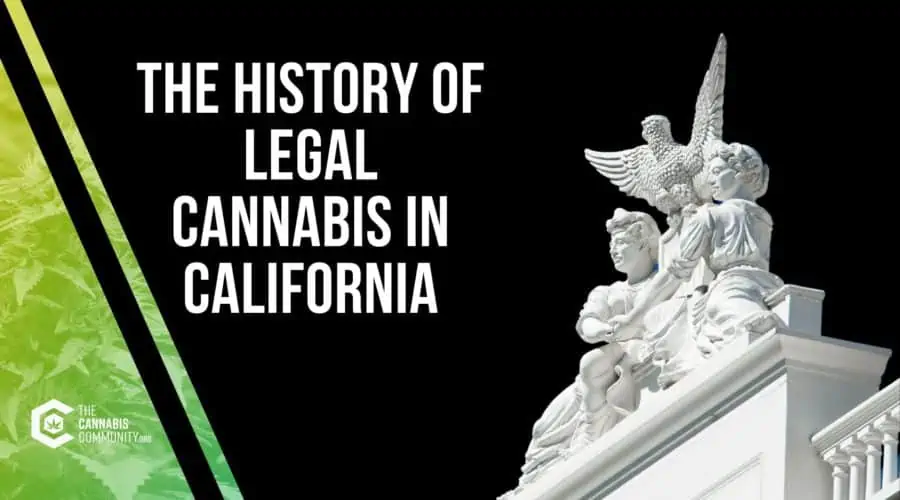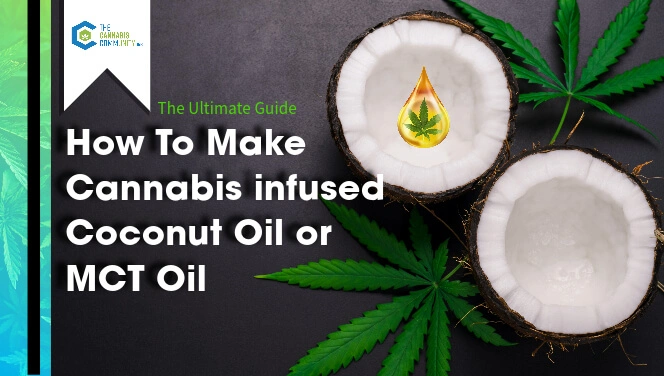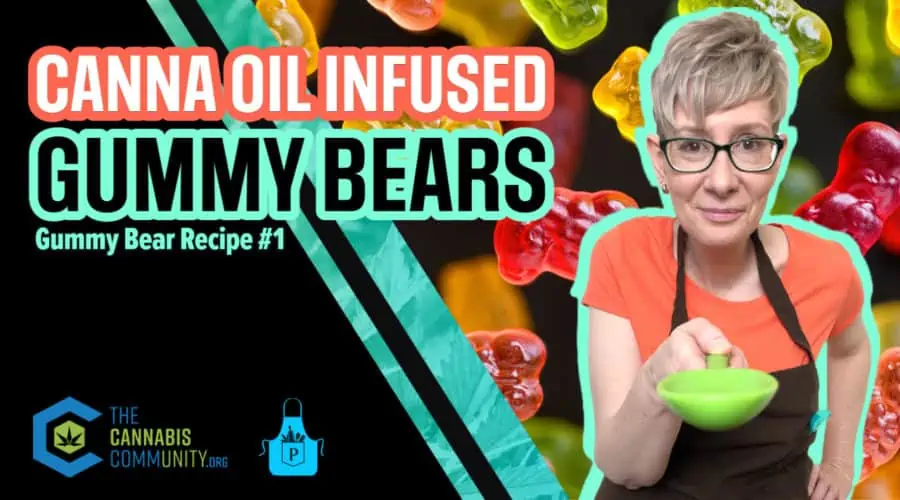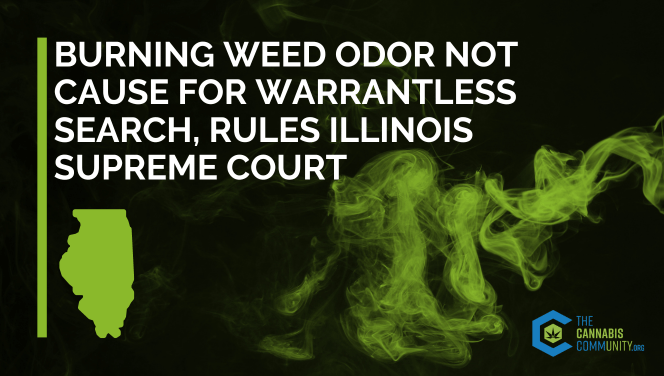California’s Unrivaled History of Legal Cannabis
Table of Contents
From Prohibition to Progress: The Story of Legal Cannabis in California
Welcome to the fascinating journey of cannabis legalization in the Golden State! California has always been at the forefront of the cannabis movement, from early criminalization to pioneering medical and recreational legalization.
This comprehensive guide will explore the complex relationship between California and cannabis, delving into the key moments that have shaped its legal status today.
Whether you’re a history buff, a cannabis enthusiast, or simply curious, this article offers a rich narrative that captures the essence of California’s trailblazing role in cannabis legalization.
The Complex Relationships Between California and Cannabis
The state government has had a complicated relationship with cannabis throughout the years, with it being both banned and legalized at different points.
Learn the full history of cannabis in California, from its earliest beginnings to its legalization in the modern day, in this fascinating article.
Cannabis is legal in California for both medicinal use and adult (recreational) use. You can purchase marijuana if you are:
- 18 years old or older with a doctor’s approval (medicinal use)
- 21 or older (adult use)
Cannabis laws in cities and counties may be tougher than those in the state. Adults and medicinal users are subject to various rules.
Medicinal patients have higher possession limits. If their doctor recommends it, they can also grow more plants at home or can buy additional cannabis every day.
Cannabis can be used on private property but not in public venues such as restaurants, bars, or any place where tobacco is prohibited, including a school, daycare center, or youth center.
On privately owned property, property owners can prohibit the usage of cannabis. If you rent, check your lease to determine if there are any limitations.
Most hotels or vacation rental properties also prohibit visitors from using cannabis in their rooms. To be safe, inquire at the front desk or with the property owner about the guidelines for your stay.
Because cannabis is still illegal under federal law, you can’t use or bring it on federal grounds, such as national parks or across state borders.
Early Criminalization: The Poison and Pharmacy Act of 1907
The California State Board of Pharmacy established the Poison and Pharmacy Act in 1907. This rule made it illegal to sell cocaine, morphine, or opium without a prescription.
California added marijuana to the list six years later. As a result, California was one of the first states to outlaw cannabis, with Massachusetts being the first to do so in 1911.
In the Mexican-American Sonoratown area of Los Angeles, one of the first marijuana drug raids in American history occurred in 1914. As anti-cannabis sentiment reached a fever pitch, the law began to tighten its grip on marijuana users.
The 1920s to 1950s: Increasing Penalties for Cannabis Possession
Possession was punishable by six years in prison in 1925. A second crime was punishable by up to ten years in prison by the end of the decade.
In 1932, marijuana was involved in over 60% of all drug arrests in Los Angeles. The Marihuana Tax Act of 1937 rendered cannabis illegal on a federal level.
In truth, California’s passage had little impact because the state already penalized users, cultivators, and sellers.
Marijuana possession penalties were increased to a minimum of 1-10 years in jail in 1954, while marijuana sales were made punishable by 5-15 years in prison, with a required three-year sentence before parole eligibility.
With two prior convictions, the maximum penalty for both offenses was increased to life in prison.
The Rise of Cannabis Activism: LEMAR and the Beatnik Culture
Fortunately, some courageous men and women in California refused to let marijuana die. The hippie and beatnik cultures explored the substance, which sparked growing interest in its use.
LEgalize MARijuana (LEMAR) was founded in 1964 by beat poet Allen Ginsberg. LeMar was founded in the Lower East Side of New York City, and its members began protesting marijuana prohibition.
It was the first marijuana legalization campaign in the United States.
Their protests never drew enormous crowds in those early days, but their efforts began the process of progressively bringing marijuana smoking and marijuana smokers out of the closet, and proving that there is nothing wrong with it.
The 1970s: Attempts at Legalization and Decriminalization
Around this time, California’s ‘maverick’ reputation began to emerge. With the 1972 California Proposition 19, the state became the first to try to legalize marijuana.
Also known as Proposition 19 or the California Marijuana Initiative (CMI), a statewide ballot initiative happened in California on November 7, 1972.
If passed, the bill would have made it legal for anyone 18 or older to use, possess, grow, process, or transport marijuana for personal use in California.
Unfortunately, 66.5 % of voters rejected the proposition, but it was the start of a significant movement.
Various parts of the state began to take action. The Berkeley Marijuana Initiative I of 1973 barred police from making marijuana-related arrests without the city council’s approval.
If the Berkeley Initiative was a watershed moment, the Moscone Act of 1975 was a game-changer. This Act reduced small-scale marijuana possession (1 oz.) from a felony to a misdemeanor.
A large number of cannabis-related arrests in the criminal justice system motivated the enactment of the bill.
Such arrests were a waste of time and money for public officials; they cost California $100 million per year.
Marijuana charges such as possession, transit, sale, and production of cannabis became the lowest priority for police officers after the 1979 Berkeley Marijuana Initiative II.
The Medical Cannabis Movement: Proposition P and Beyond
By the late 1980s, it was clear that more research into marijuana’s therapeutic properties was required. A judge found in 1988 that the Drug Enforcement Agency (DEA) was impeding marijuana research.
Groups like NORML have petitioned the DEA to reclassify marijuana, but the drug remains on Schedule I.
The human brain’s cannabinoid receptors were found in June 2003, paving the way for a better understanding of how cannabis-based medications act in the central nervous system.
San Francisco was the birthplace of the medicinal marijuana movement in the early 1990s. Proposition P, which permitted the medical use of cannabis in San Francisco, was supported by over 80% of voters in November 1991.
Licensed physicians are no longer permitted to be punished or prevented from recommending hemp products for medicinal purposes.
The city’s board of supervisors passed a resolution the next year, urging the district attorney and police commission to make marijuana offenses a low priority. The San Francisco Cannabis Buyers Club, the first public medical marijuana dispensary in the United States, began selling marijuana to medical patients in 1992.
Legalization of Medical Cannabis in California
California’s push to legalize medicinal marijuana was picking up steam. On November 5, 1996, 55.6% of California voters approved the legalization of marijuana for medical use.
Proposition 215, officially titled “The Compassionate Use Act of 1996”, made CAthe first state in the modern age to legalize cannabis for medicinal purposes.
Qualifying people and their caregivers are protected from criminal prosecution, should the state attempt to charge them with possession or cultivation of marijuana.
Proposition 215 was a watershed moment for California, but the state didn’t stop there: in 1999, it launched a three-year MMJ study program to demonstrate that cannabis could be utilized for dependable medical treatment.
The University of California’s Center for Medicinal Cannabis Research at UC San Diego was funded as a result of this law.
Proposition 215 was widely criticized for its ambiguous phrasing, although the statute has subsequently been clarified by state Supreme Court judgments and successive legislation.
As a result Senate Bill 420, also called the Medical Marijuana Program Act, was passed in January 2003.
It established a medical marijuana identification card system and the ability for non-profit collectives to provide cannabis to patients.
The Medical Marijuana Program (MMP) of the California Department of Public Health issues medical cannabis identification cards. In May 2005, the program was launched in three counties before being expanded statewide in August of that year.
Cannabis dispensaries in the state only accept referrals from doctors who have examined the patient, who believe cannabis will be good for their condition, and who have a valid license from the Medical Board of California.
The New Millennium: Struggles and Setbacks
Law Enforcement Against Prohibition (LEAP) was established in June 2002. The organization began with five founding police officers and has grown to encompass nearly 50,000 people, including police officers, judges, prosecutors, DEA agents, and FBI agents.
According to the organization, prohibition exacerbates violence and drug addiction. Marijuana should not receive any special treatment.
In 2005, Oakland became the first city in the state to regulate and tax adult-use cannabis. Oakland authorized a citywide cannabis cultivation plan the same year.
Unfortunately, Oakland had to back down after President Obama told them that they were breaking federal law.
Governor Arnold Schwarzenegger signed Senate Bill 1449 into law in 2010.
This law states that anyone in possession of less than 28.5 grams of marijuana, other than concentrated cannabis, is guilty of a misdemeanor and faces a fine of up to $100 unless otherwise authorized by law.
Despite this, it appeared as if nothing could stop California from fully legalizing marijuana. Residents went to the polls in November 2010 to vote on Proposition 19.
If it had passed, the State of California would have been the first to legalize marijuana for recreational use.
Unfortunately, Proposition 19 was defeated, with 54% of voters voting against it. Law enforcement and medical marijuana growers opposed the measure. Proposition 19 was believed to be sabotaged by SB 1449, which was passed one month before.
In 2011-2012, the state dealt with more setbacks. The DEA refused to remove marijuana from its list of restricted substances in July 2021.
In October of the same year, the US attorneys for CA began prosecuting property owners and landlords who rent buildings or land used to sell or produce marijuana.
In January 2012, Mendocino County gave in to federal pressure and ended its medicinal marijuana producer permit program, which was the first in the US.
It was also unlawful to grow more than 25 marijuana plants in the city, a reduction from the previous ceiling of 99 plants.
In July 2012, the federal government targeted Harborside Health Center in Oakland, which is widely regarded as the world’s largest marijuana dispensary.
Workers were unable to enter the building when the US government launched a lawsuit to seize it.
In October, Oakland city officials filed a lawsuit against the federal government over the Harborside incident. In 2016, the federal authorities dropped the case.
The Turning Point: Proposition 64 and Recreational Cannabis
Both Colorado and Washington legalized recreational marijuana in December 2012. In a 2013 CA state poll, 55% of respondents said they would vote yes on a measure legalizing marijuana for recreational use.
It was inevitable that California would join the party as more states followed Washington and Colorado’s lead.
On November 8, 2016, the big day arrived when 57% of voters said yes to Proposition 64.
This bill legalizes certain types of marijuana use and cultivation for adults 21 and older, reduces criminal penalties for certain marijuana-related offenses for adults and adolescents, and allows for resentencing, dismissal, and sealing of prior qualified marijuana-related convictions.
The proposal includes provisions for legalized usage regulation, licensing, and taxation.
In a private residence, one can grow up to six live plants. They must, however, be kept sealed and hidden from public view. A
n extensive list of usage limits should be reviewed before cultivating cannabis plants. Although Proposition 64 was passed in 2016, marijuana users in California had to wait until January 1, 2018 for it to become legal.
Current Regulations: What You Need to Know
California’s journey to complete legalization was long and winding, and we owe a debt of gratitude to those who sacrificed their reputation and freedom in the process.
CA is one of a rising number of states that have legalized marijuana for both medical and recreational use. The Golden State has been a pioneer in the marijuana industry. We anticipate this trend will continue.
Frequently Asked Questions
What was the first law that criminalized cannabis in California?
The Poison and Pharmacy Act of 1907 was one of the earliest laws that criminalized cannabis in California.
When did California decriminalize cannabis?
California decriminalized cannabis in 1975, reducing the penalty for possession of small amounts to a civil fine.
What is Proposition P?
Proposition P was a San Francisco resolution passed in 1991 that allowed for the medical use of cannabis.
What did Proposition 64 achieve?
Proposition 64, passed in 2016, legalized the recreational use of cannabis for adults over the age of 21 in California.
Is medical cannabis still legal in California?
Yes, medical cannabis remains legal in California, and patients can obtain it with a medical recommendation.
What are the current regulations for cannabis in California?
Current regulations allow adults 21 and over to possess, purchase, and consume cannabis in designated areas, subject to certain restrictions.
Enjoyed this deep dive into California’s cannabis history? Don’t forget to share this article with your network and join the conversation.
If you’re passionate about cannabis legalization and its history, subscribe to our newsletter for more insightful articles and updates. Your voice matters—let’s keep the dialogue going!
Enjoyed This Content? Read More:
-
How to Make Cannabis-Infused Coconut Oil or MCT Oil: Crockpot Recipes
In this guide, you’ll learn how to make cannabis-infused coconut oil or MCT oil, decarboxylate cannabis, or choose to infuse cannabis into any oil of your choice.
-
How to Make THC Gummy Bears with Canna Oil
This is a great no-fail recipe for beginners. The corn syrup in this recipe will help your gummy bears have that nice and chewy texture we’ve all come to love.
-
Burning Weed Odor Not Cause for Warrantless Search, Rules Illinois Supreme Court
A Landmark Case for IL Medical Cannabis Patient Protections On September 9th, the Illinois Supreme Court issued a major victory for cannabis consumers and patients, declaring that the aroma of burnt cannabis is insufficient probable cause for a warrantless search. Illinois has long been at the forefront of the fight for plant medicine. Medical patients…
-
GMO Cookies: A Strain Review of Its Potent Aroma and Powerful Effects
GMO Cookies is a popular cannabis strain for homegrow. Here’s what you need to know to get started with these seeds.
-
Cherry Pie Cannabis Strain: A Sweet Treat with Potent Effects
Cherry Pie is a popular cannabis strain for homegrow. Here’s what you need to know to get started with these seeds.

